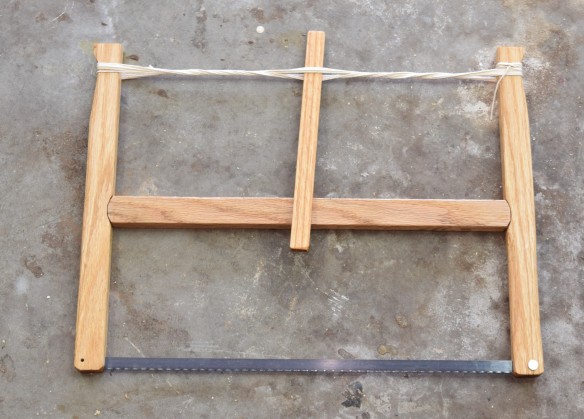I have a number of sharp and dangerous objects lying around my office. My intention was to eventually get them mounted up on the wall in nice displays. The prospect of tiny hands getting a hold of them moves that up in the priority list.
First up is my kukri. I rehabbed it many moons ago with a friend and have been sitting on it ever since. I found a thick piece of mahogany I bought years ago for a project idea, but never ended up executing on. This is my first time working with it, and a low risk project like this is a good place to start. It is really hard stuff, but look great when you get a good hand plane across it. I re-sawed the piece to save material because this stuff is quite expensive.


The back of the plaque was cut to size, had some shapes cut out at the corners, then got a round over to smooth everything out.


To hold the knife in place, I used some blocks of the mahogany and shaped notches with a hand saw, then rasp. When I was sure they would fit in place, I did a lot of sanding to round over the outside to make them look nice.


I experimented with dye to darken up the mahogany a little. Not too much, but I wanted it to be closer to the aged handle than any oil based finish would give. When I got the color I wanted I hit it with some shellac and called the project finished.

Next on the list was my bow and arrows. They had been sitting in a floor stand I made for quick access. I honestly hadn’t really done any shooting since we moved, so this could probably be put up on the wall without any inconvenience. Here is what the final piece looks like so you can see where we are going. I don’t use many stains anymore, but I think red oak stains wonderfully!

I had an image of this one in my head for a while and really wanted to do half lap joints to hold everything together, and have a lot of shape in the center. I laid out the curves and cut everything on the bandsaw.

The spear point tip was another thing I had a pretty strong vision of. It came off the saw a little lopsided, but I was able to sand it into a respectable shape.

For the half laps I tried something new. In the past I would just cut them by hand 100%. I decided to try and be a hybrid woodworker. I hogged away most of the waist with my little trim router, then use a chisel to take it up to the line. It does make for a very smooth straight cheek.
My experience doing this trick with the other half of the joint was less stellar. The bit would keep grabbing and bouncing around and I went through a lot of batteries. The top left slot in the left hand picture shows where I started with the router, then just ran out of batteries. I had already defined the edges with a saw. I took a chisel, and in about 20 seconds cleared out 80% of the waste. I then went back with a new battery and cleaned up the bottom (right hand picture). That was way easier. Trim routers can’t hog out a ton of material, but they do great at cleaning up the last little bit. lesson learned.
Here is the un-assembled shot of everything. I did a little trimming with a block and shoulder plane to make everything snug. The final joints look pretty tight on the outside, I am proud of them. I cut the tennon parts a little long and planed them flush when the glue was dried.


To hold the bow in place I did a little more carving and shaping on some oak blocks.

I didn’t do any edge rounding on this one. I wanted it to look reasonably refined, but still a little rustic. Like it might be something an old armory would use to hold a bow that was always needed at the ready.

Last but not least I made a big double bladed ax for my armor costume. This was probably back in 2010 or so. It has been moved around and mostly lived in closets. Now, it gets to live next to my shield on the wall. Putting this one together was so fast I got it up on the wall before I remembered to take the first picture. Oops!







































